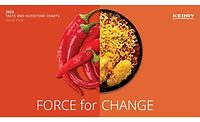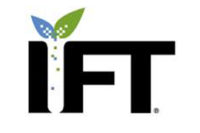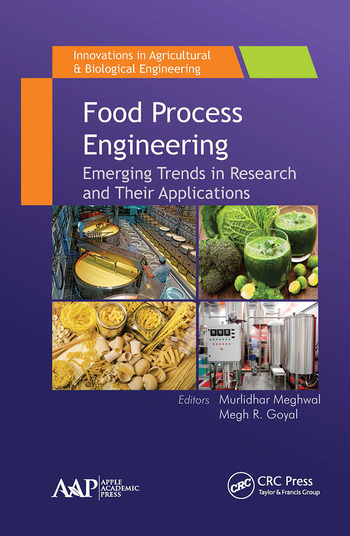Kerry Group identifies 6 key taste trends
Trends show consumers want to balance sustainability and health, with a desire for surprise and novel adventures

Kerry Group, a taste and nutrition company, has identified 6 key trends that are set to shape the food and beverages we see in 2022. While the underlying drivers that influence consumers associations with taste remain the same—comfort, health and nostalgia—their insatiable appetite for something new means food and beverage businesses will be facing increased demand as well as creative freedom to innovate and bring new products to market.
Now more than a decade old, Kerry’s Taste Charts represent the company’s annual review of the food and beverage landscape utilizing sales performance, consumer trends, foodservice influences and internal culinary and mixology expertise to predict tastes for the coming year. In 2021, the Taste Charts correctly predicted that Covid-19 would lead to traditional tastes undergoing a popular resurgence as people sought comfort in their food and beverages.
The top 6 taste trends to watch for in 2022 are:
-
Conventional surprises. Challenging the norm, this is the consumers’ desire to seek comfort in food but with an added element of surprise from their classic favorites. For instance, the global favorite chocolate milkshake would gain added appeal with surprise flavors such as lavender.
-
License to thrill. This calls to attention the deep desire of consumers to want to explore and satiate their sense of adventure with food. Where life has lacked spontaneity due to Covid-19, consumers are now turning to their plates/ or palette for the thrill. For instance, the traditional hot chocolate would appear in different formats and applications, such as a hot chocolate cookie sandwich or a hot chocolate enrobed potato chip. License to thrill also rings true for international flavors that consumers want to experience closer to home, or in their own kitchens, such as zaatar, Aleppo pepper, Sakura-Japanese cherry blossom.
-
Tasty, but healthy. Driven by consumers desire to be healthy, and with an increasing focus on probiotic health, gut health and immune support, consumers are looking for health-forward (beyond a health halo), food and beverages that make them feel like they are taking an active role in their future health. But taste remains at the core of consumption desire and people now want the best of both worlds—sugar-free, lower carb, plant-based, vegan and diet-specific foods like keto—to also be tasty and they are not willing to compromise on taste any longer. When consumers want collagen and nootropics and adaptogens from their food and beverages that help them achieve their health goals they also want those same indulgent, nostalgic and comfort flavors that they so crave when it comes to taste. Botanicals such as sage, rosemary, lavender and citrus blossoms are set to be very popular in combination with classic flavors, as consumers seek taste-forward flavours that also help them achieve certain functional health goals – in this case emotional wellness. Think beyond beverages, but across salty and sweet food alike across the globe.
-
Authentic memories. While many thought that they would never long for school lunches again, there is a desire to evoke childhood memories and traditions or long-lost moments from the past. Consumers want to be transported back in time, with the comfort and indulgence that comes from the authentic flavors and ingredients that tell these stories. Flavors like custard, breakfast cereal, sultana and fudge are on the rise in the sweet category as consumers return to old favorites.
- Provenance with a conscience. More than 50% of consumers focus on and prioritize sustainability in food and beverages. Building on the traction seen previously, expect to see an increased focus on flavors and ingredients that have transparent origins, are sustainably sourced and are ethically processed. These ingredients are gaining prominence as consumers begin to understand the subtle taste differences of regionally and seasonally derived products that impact their community, their environment, and the planet. Consumers still want to enjoy chocolate and extracts like vanilla but want to know how they are sourced, where they are sourced from, and the community-aid provided in the process of sourcing.
- Over-the-top indulgence. Comes from a pure place of craveability as consumers desire indulgence from everyday snacks and sweets, during socially-heightened occasions, or celebrating special moments. This could be a double chocolate fudge brownie shake or an expensive cheesecake delivered home from their favorite Michelin star restaurant. Flavors that invoke a deep sense of indulgence typically comes from chocolates, caramel, sweet forward flavors, but we also see that indulgence comes from craving meals ordered from favorite restaurant that they couldn’t visit mid-pandemic this year.
To download the taste charts, click here.
Looking for a reprint of this article?
From high-res PDFs to custom plaques, order your copy today!







